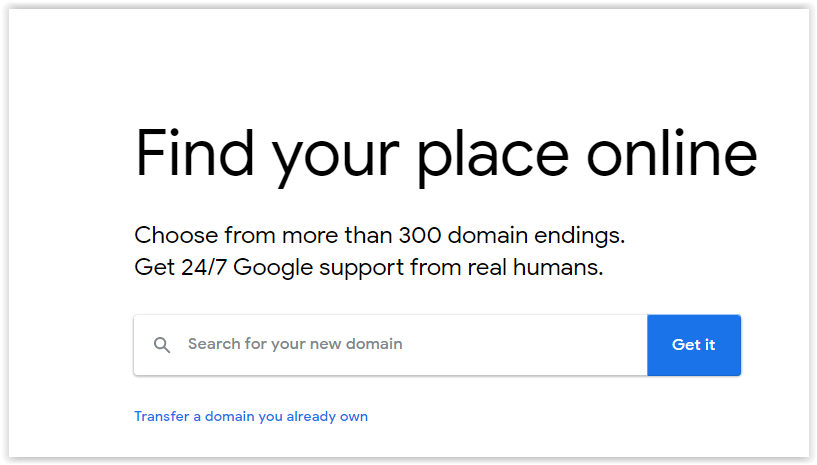You received a negative online review. It stings. Before your fingers type a rebuttal, let’s talk about your options. While an emotion-driven rebuttal may feel good in the moment, it is likely to cause long-term problems. It may even violate HIPAA. A better strategy is to develop a robust, positive online presence. Here are some steps to building your online presence and addressing a negative review.
Build An Effective Website
You cannot delete a negative online review, but you can make your online presence as strong as possible to mitigate the effects. Build a business website and consider building a personal one as well. It is important to have a presence online that positively and accurately represents your practice.
Buy Your Domain Name
Buy your domain name. Start by verifying that your domain name is available. You want patients who Google your name to see your website before coming across any negative reviews. You can use Google Domains or another provider. Search your name. Choose the endings you want and then complete the purchase. Your website developer will need your domain name to build your website.

Hire a Website Developer
Interview and select a website developer and copywriter who specialize in healthcare to design and build your website. Of course, you could build your own website, but a specialized developer can build it quickly, ensure the technology works flawlessly, and maximize its search engine optimization (SEO).
Make sure your website developer includes this critical information.
An “About Me” Page
Provide information about your educational background, length of time in the community, years of experience, specialties, awards, and credentials.
A Location Page
Add a location page for each office location. This will help prospective patients find you when they do a local search. When patients search for “physician near me.” You want your name to be first on their list. Describe the services and treatments available at each location. Add a list of your providers, a professional headshot for each, and a paragraph introducing them to the community.
A Professional Blog
Answer your patient’s most common questions with blog content. Build a strong online presence and establish yourself as an authority in your field by sharing your thought leadership.
- Add valuable, informative content to your blog regularly.
- Type in the first few words of a query your patients may be searching for and see what Google suggests as its autofill. Each of these suggestions can be a separate blog post.

- Monitor your website performance using Google Analytics. Your website developer can set this up. Then, schedule a weekly or biweekly call to review your website engagement and SEO performance.
Writing a blog takes time. You may want to consider outsourcing this task. Hiring a ghostwriter to write your posts is a great idea. You review them, provide feedback, and post them under your name. Over time, your ghostwriter will learn how to write in your voice. Provide plenty of feedback to speed up the process.
Engage The Community
Building an online presence takes time:
- Don’t try to create all of your online content at once.
- Reuse content across many platforms.
- Shorten your blog posts for social media.
- Make a video of the content for YouTube.
- Outsource as much of your content development as possible.
Encourage Interaction
- Allow users to add comments, questions, and feedback to your blog posts. Your willingness to respond to feedback will be noticed by your patients, both current and future.
Claim your Google Business Listing
Your Google Business listing is how locals will find your practice. Start by searching your business on Google. At the bottom of a skeleton listing for your business, select “Own this business?” Then, sign in via your Gmail account and select “Manage Now.”
- Fill out your profile, including your image, Google Maps location, specialty, address, and contact information.
- Craft your business description so it includes your main specialty and your location.
- Include the providers’ names, specialties, and locations. Be very specific and add as much detail as possible.
- Add short posts that will help with your SEO and build your online credibility.

Add Reviews
You can grow your Google reviews by:
- Handing out business cards with your website URL and a note requesting a quick review
- Set up an iPad kiosk at your office check-out counter
- Place a link on your website requesting Google reviews
- Send surveys via email or text asking for feedback
Have your website developer link your Google Reviews with your website. Your willingness to make your reviews available and easy to find increases the comfort level of prospective patients.
You may be tempted to filter your business reviews and only post positive ones. Filtering your reviews is against Google’s policy.
Finishing Touches
Whether you are ready to publish a new website or are checking a current one, don’t forget to:
- Check the accuracy of all information on your website, especially contact information.
- Check your links and ensure none are broken or lead to content you no longer want to be associated with.
- Check your blog posts. Are they current and informative? Having up-to-date information your patients want to read will help you rank higher in a Google search.
Take Care of Social Media
Review your practice presence on major social media platforms, such as Facebook, Twitter, and LinkedIn.
- Claim your business and complete your profile.
- Post regularly to build your traffic.
Consider hiring a social media manager who can post your blog posts on your website, schedule variations of your blog posts for your social media sites, and monitor your social media sites for responses.
It is critical to monitor your social media accounts so that you can respond to questions or concerns about your practice immediately. Before scheduling their first appointment, prospective patients will check on social media for comments or complaints about your practice. You can combat misinformation and establish yourself as a reliable source of accurate medical information.

Respond to Questions and Comments
Consider designating a staff member to handle social media and respond to any online reviews. You can also outsource responding to reviews to a reputation management company.
Whoever responds, make sure the response is calm, polite, prompt, HIPAA compliant, and factual. Speak in terms of general practice policies and procedures rather than a specific situation. Acknowledge any valid criticism. Share how you plan to improve in the future. Whenever possible, take the conversation offline by providing your practice contact information and an invitation to discuss the situation further.
Address the Bad Review
Building an online presence is a great strategy to stop any bad reviews from leading to lost patients. However, it is also important to address a bad review promptly. Most of the time, the underlying problem is miscommunication. So, the best way to address the issue is to call the patient and talk with them. Listen to what the concern is and focus on trying to right the perceived wrong. Before ending the conversation, thank them for their feedback.
What not to do:
- Respond when you are angry or tired
- Divulge any patient information
- Enter the conversation on the defensive
- Make excuses or offer a blanket apology
- Ask a reviewer to remove the review (this will backfire)
- Divulge the identity of the patient or even acknowledge that you treat them
- Reveal treatment or billing information
Continue to Build Your Online Presence
After you have built your website and established your online presence, the next step is to broaden your horizons by contributing to communities in order to further develop your reputation as an expert.
Do Guest Blog Posts
Expand your reach by providing guest posts for other websites. St. George’s University lists 75 medical blogs on various topics. See which ones resonate most with you. Contact them to see if they accept guest blog posts.
Use HARO
Serve as a source for reporters. Register for Help a Reporter (HARO). HARO emails requests for sources to your inbox three times per day. Have a staff member scan them daily, looking for reporters who need your expertise. Then, email the reporter a quick answer or quote along with a link to your business website. It is a great way to build your practice and your online reputation and presence.
Answer Online Questions
Respond to questions on sites like Quora and Reddit. Build your profile on both sites. Include your name, image, link to your medical practice, and a tagline. Start answering questions in your field of expertise. Cite the expertise of other doctors and journal articles to build your credibility and become part of the community.
If you prefer making videos to writing content, start a YouTube channel.
To get a custom YouTube URL, you need
- To have at least 100 subscribers
- To be active for at least 30 days
- To have an uploaded profile picture
- To have an uploaded banner
Videos that show your personality and interests while still providing a service to your patients tend to rank higher and generate the most interest.
Now that you have done all the work to build a positive online presence, it is important to monitor your results. You can do this by subscribing to a Google Custom Alert. Add variations of your name to the alert, and you will receive an email when you are mentioned online.
Building a solid online presence takes time and effort. Prioritize your efforts and outsource whenever possible. Make sure you own all your data and platforms. Spot check your social media and website to verify that your staff is responding appropriately. Your efforts will be rewarded if you continue to write and share useful content. In addition, your reputation will be established online, which will help mitigate the effects of any future negative reviews.